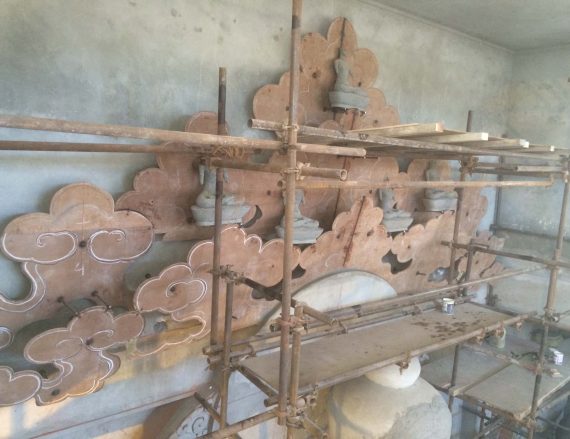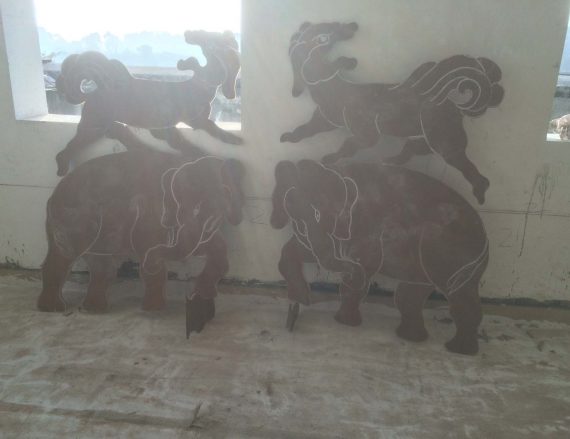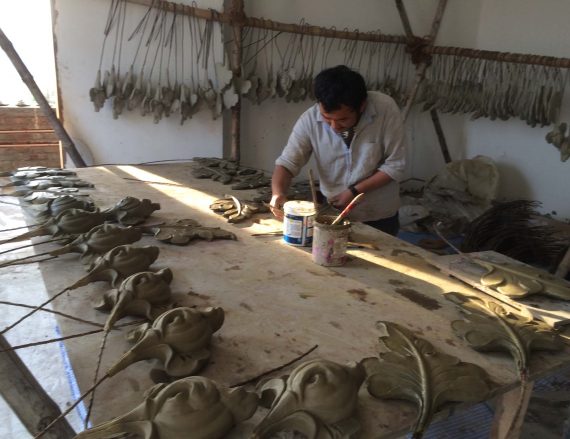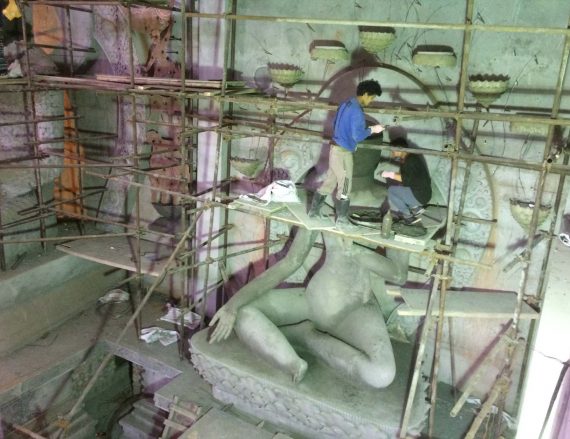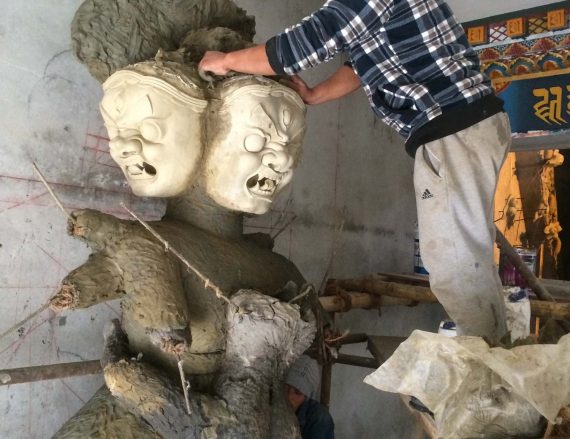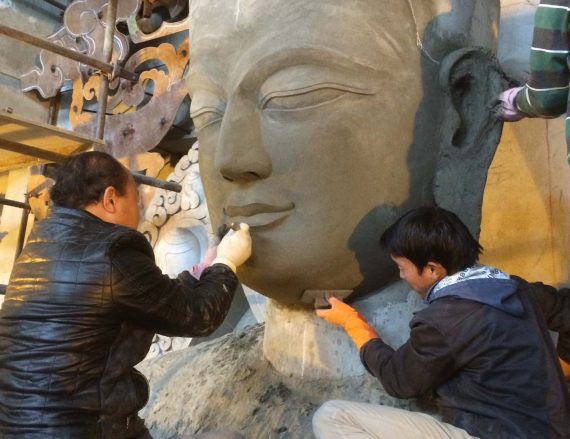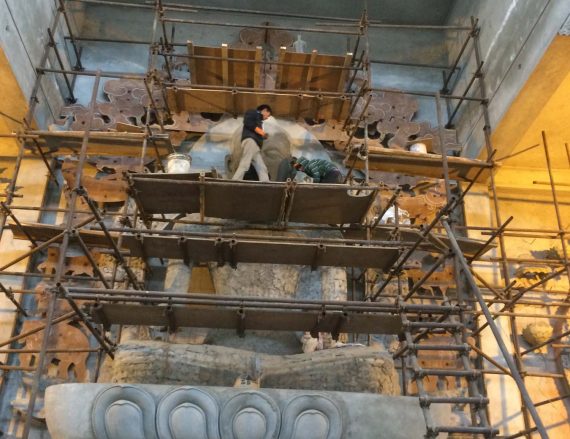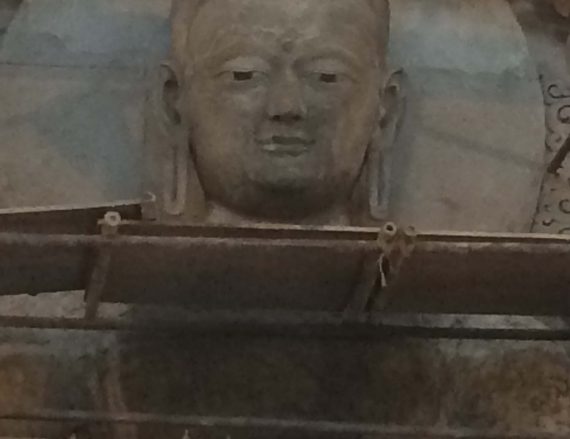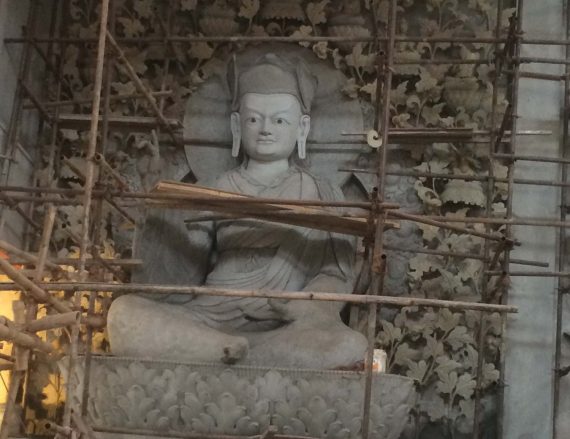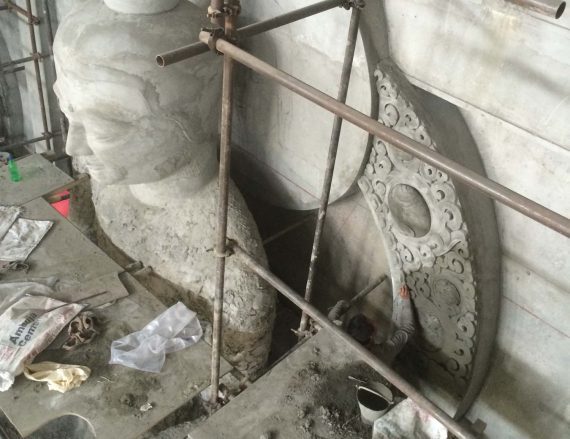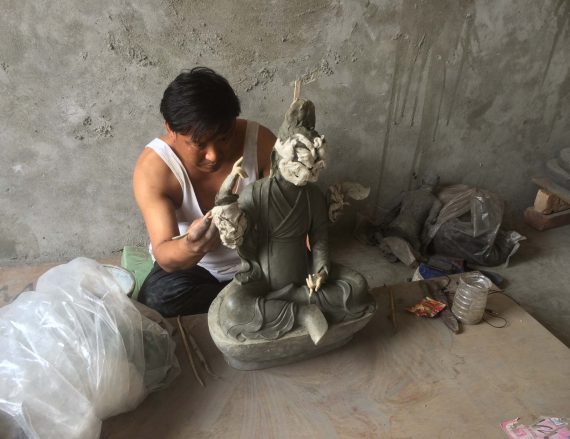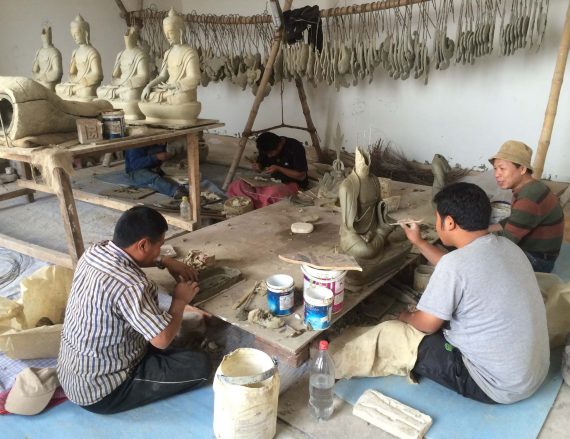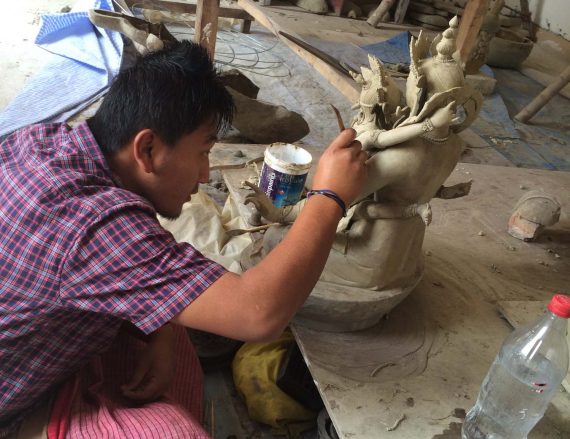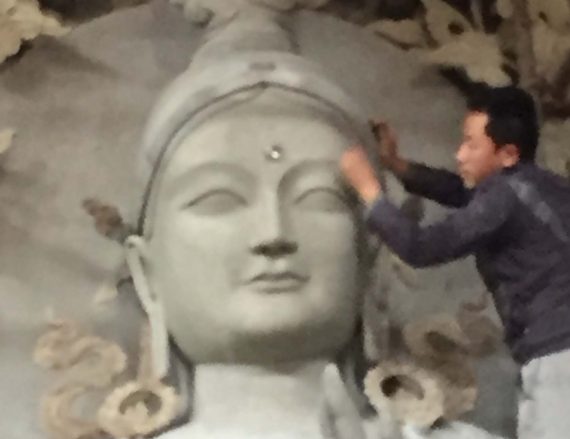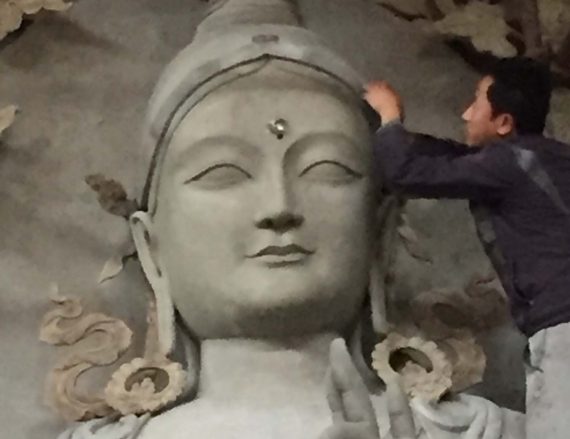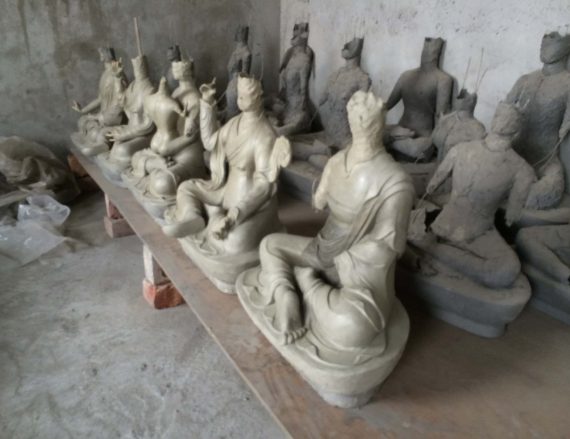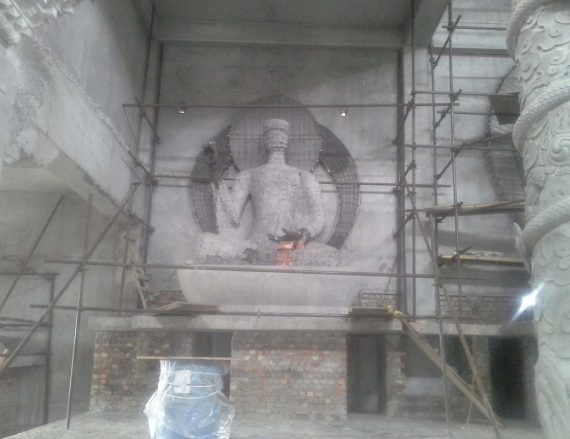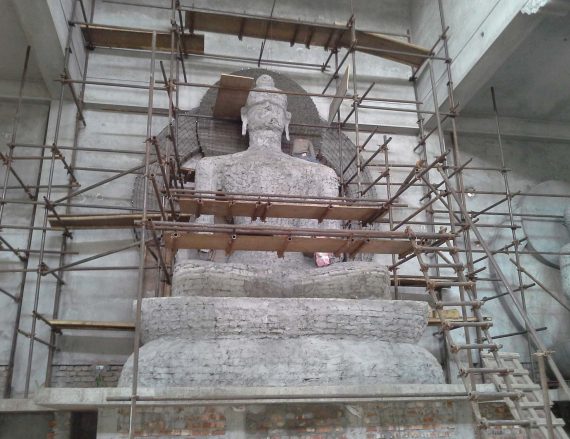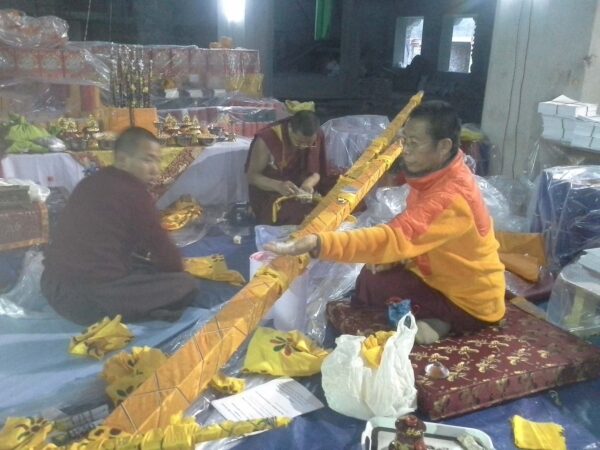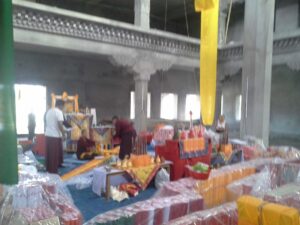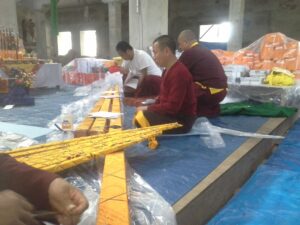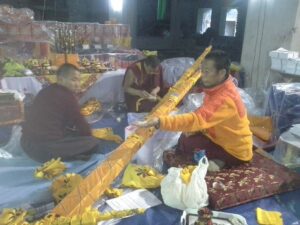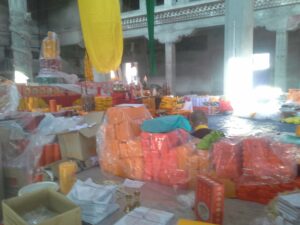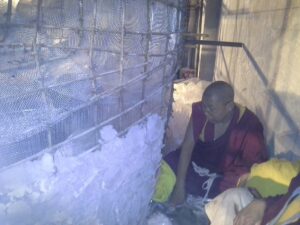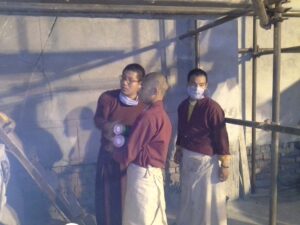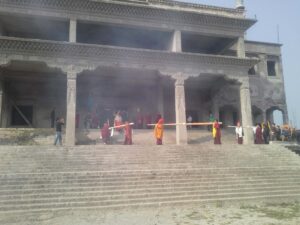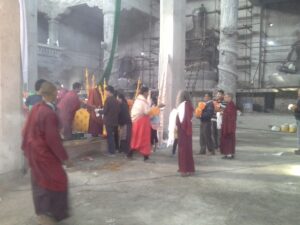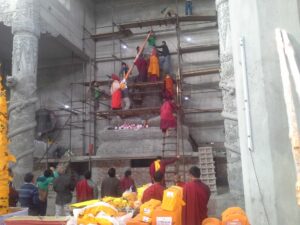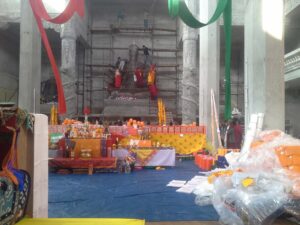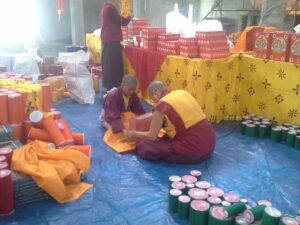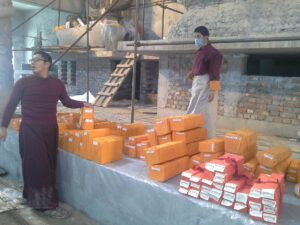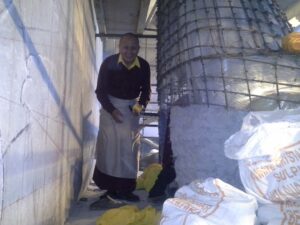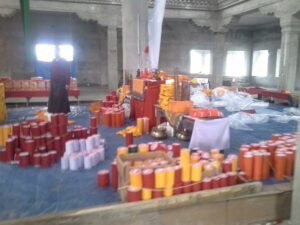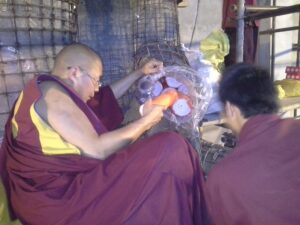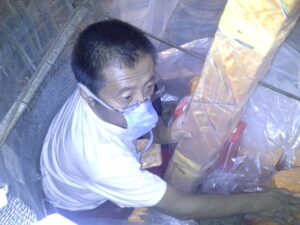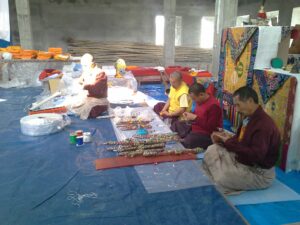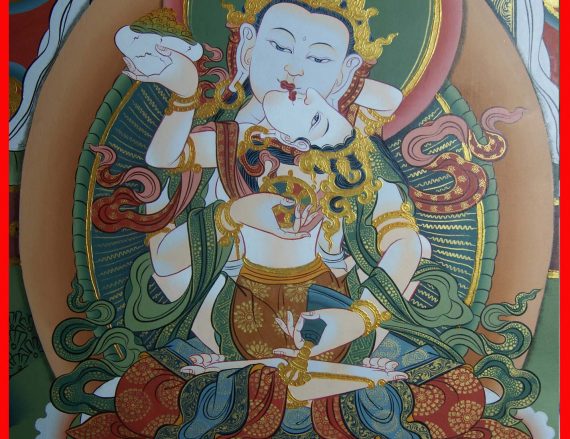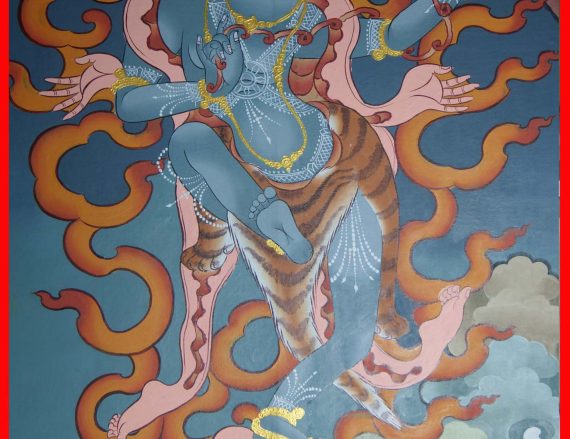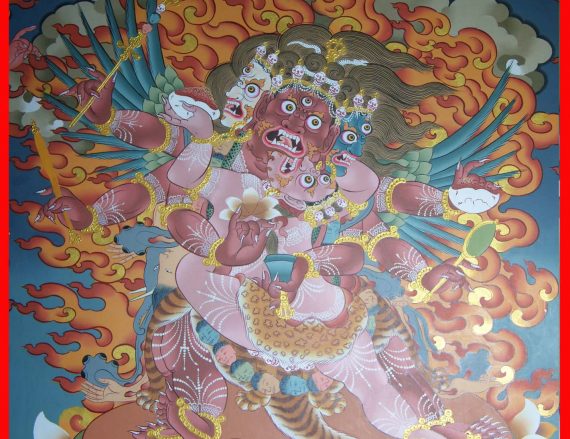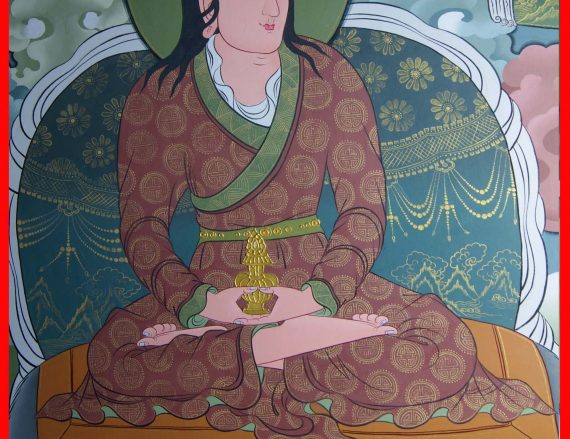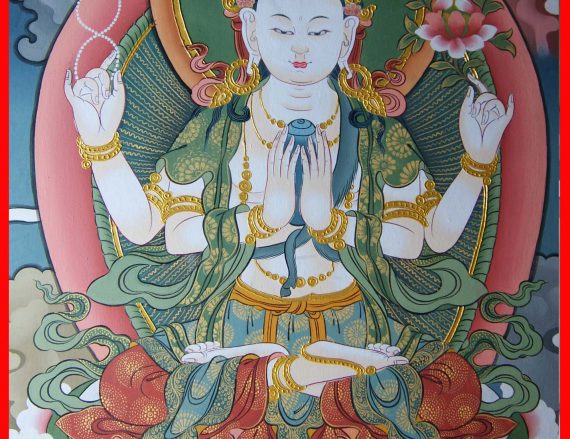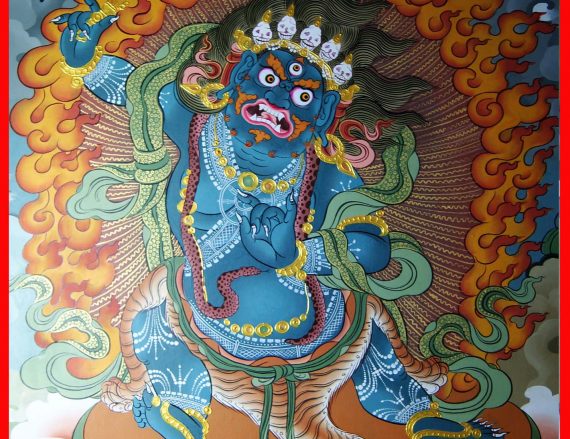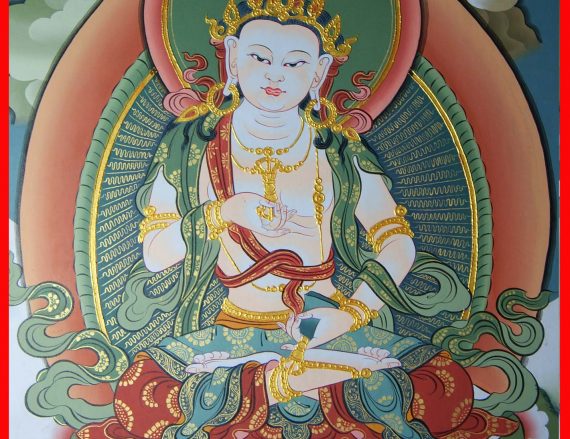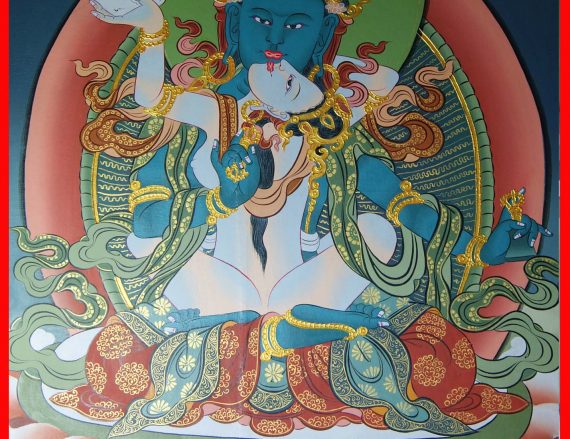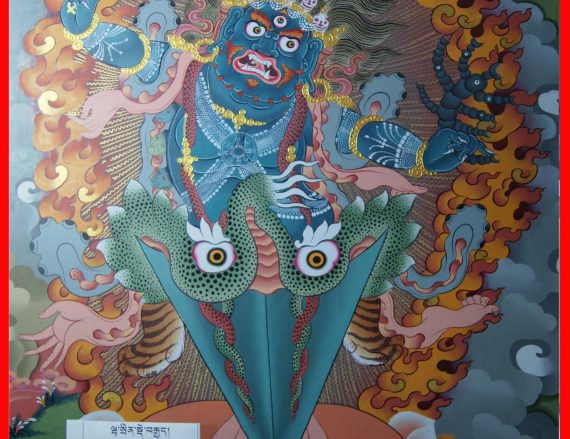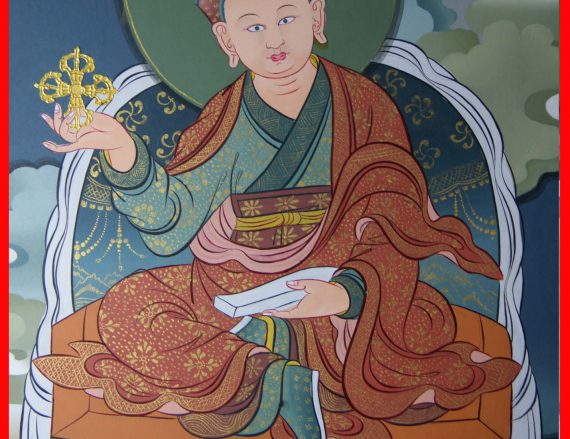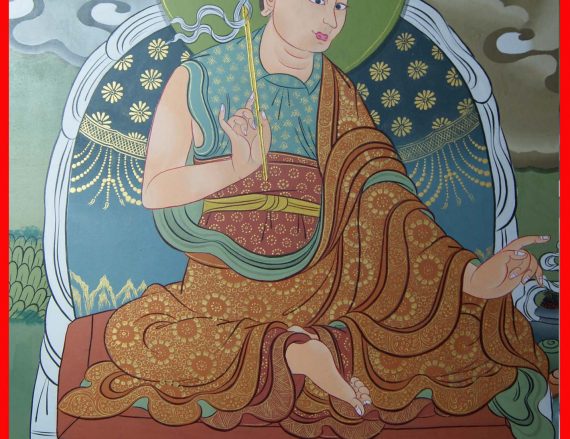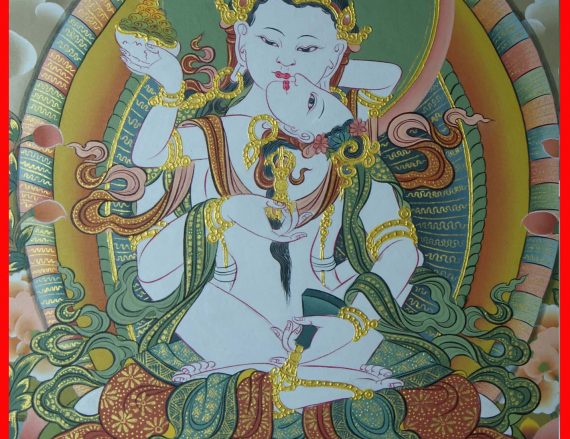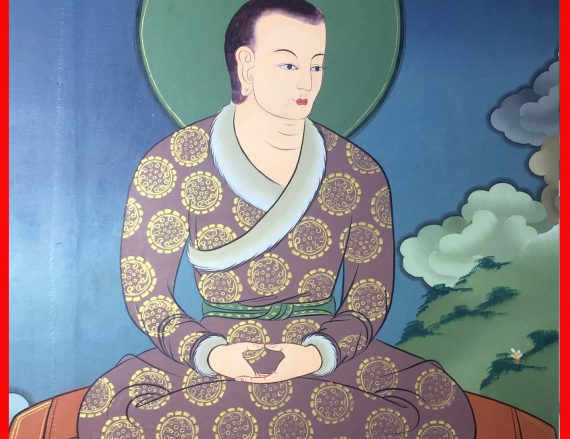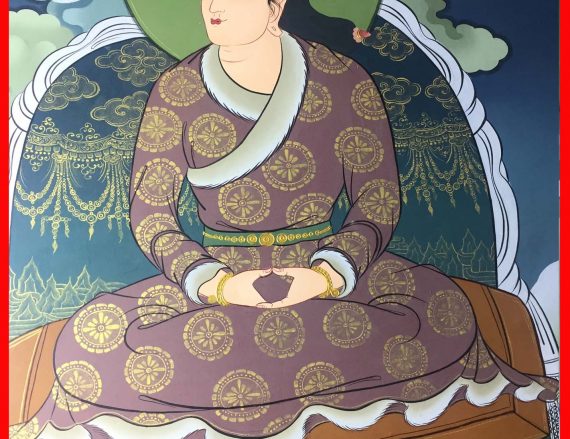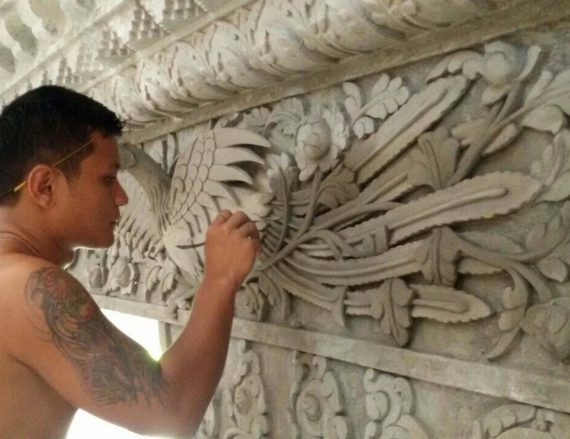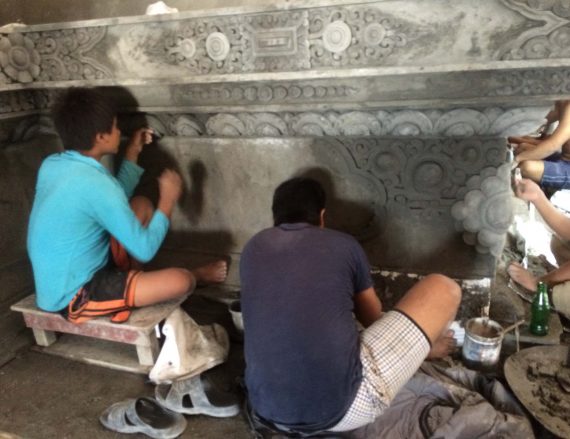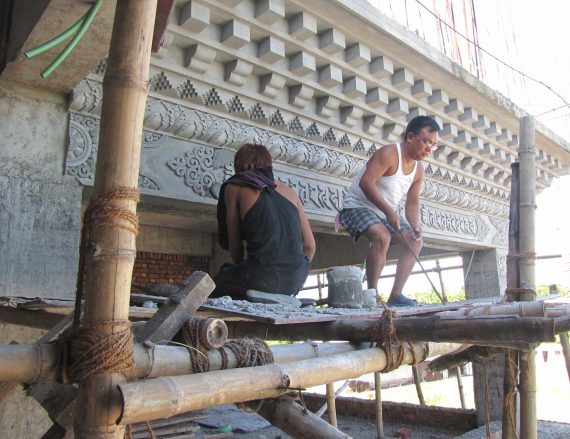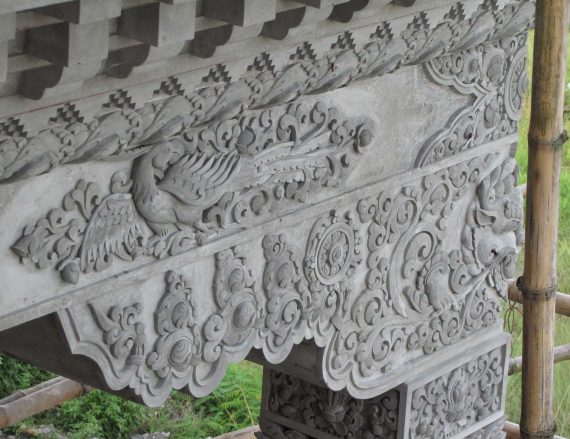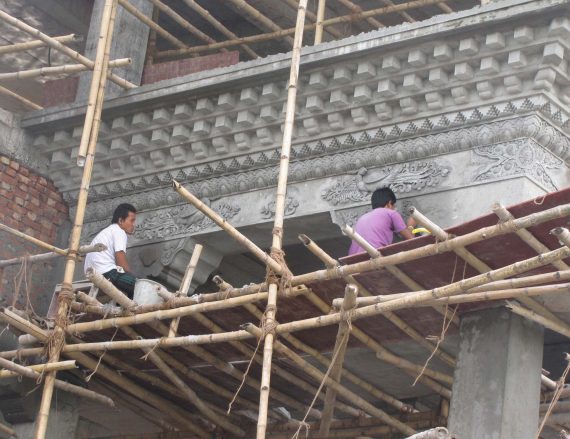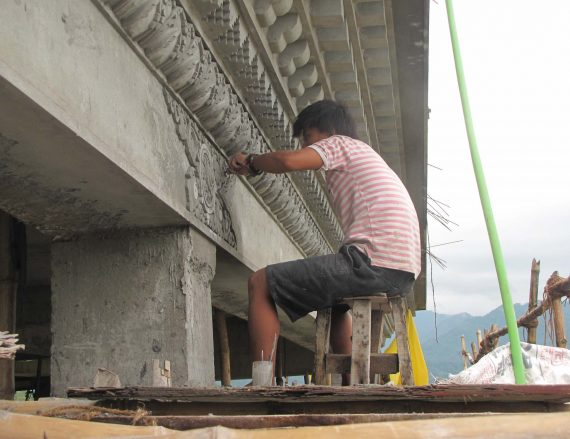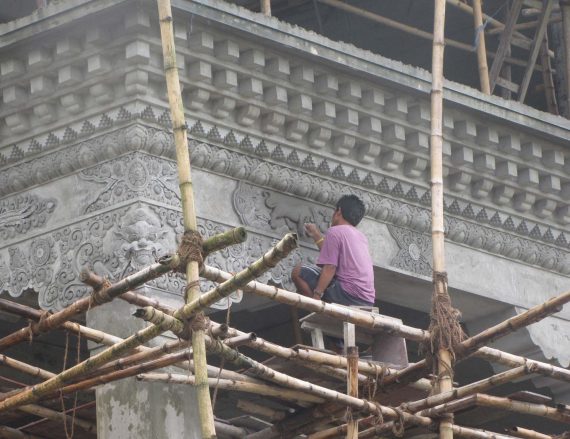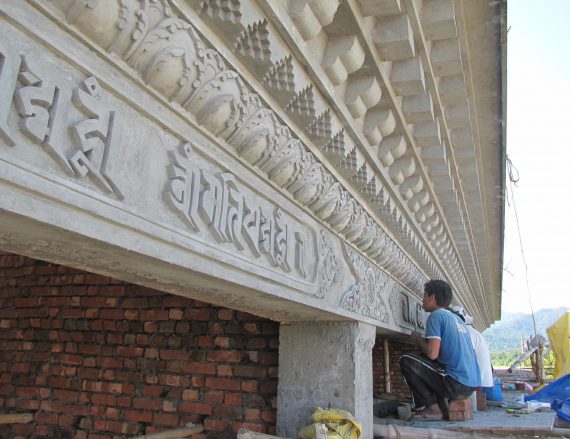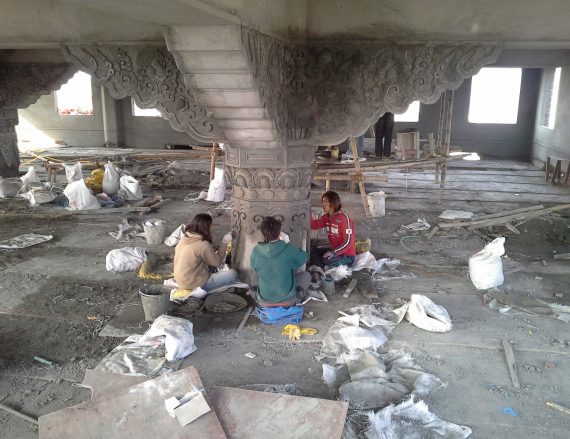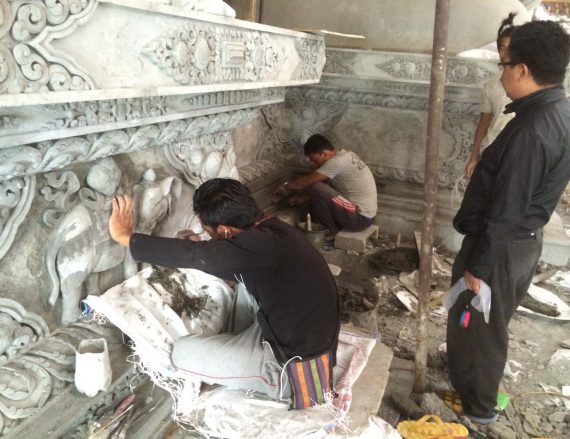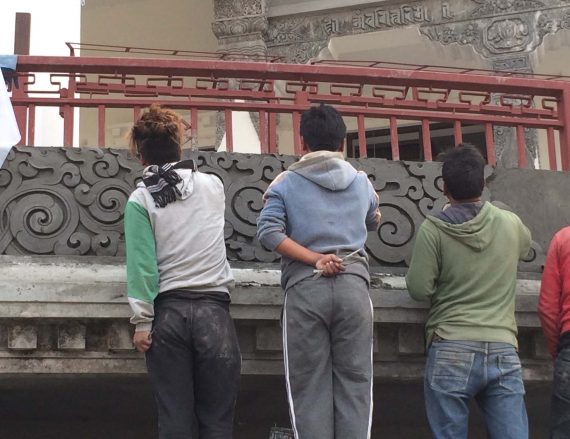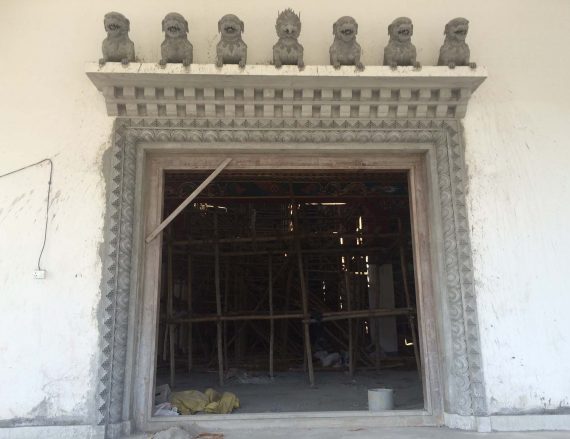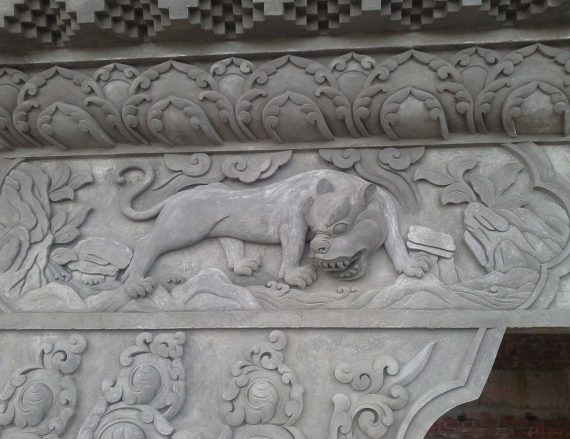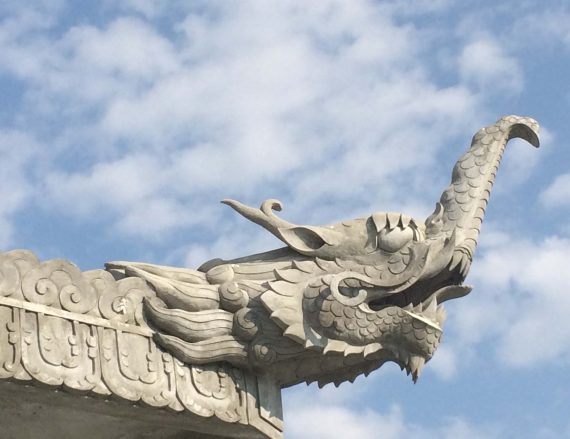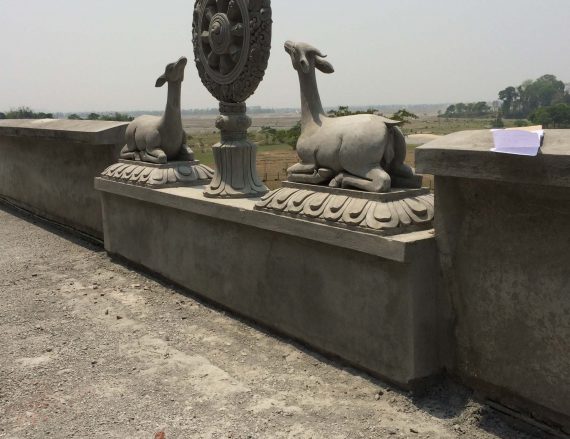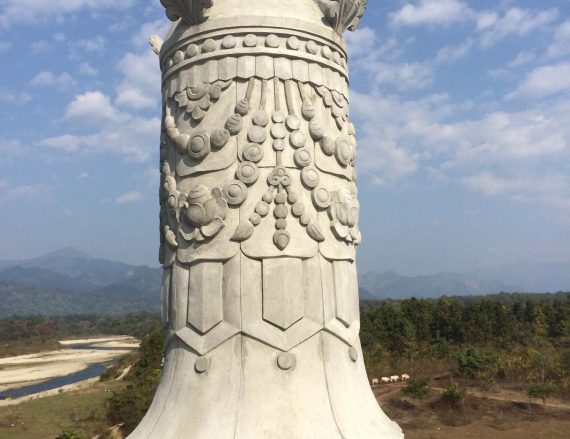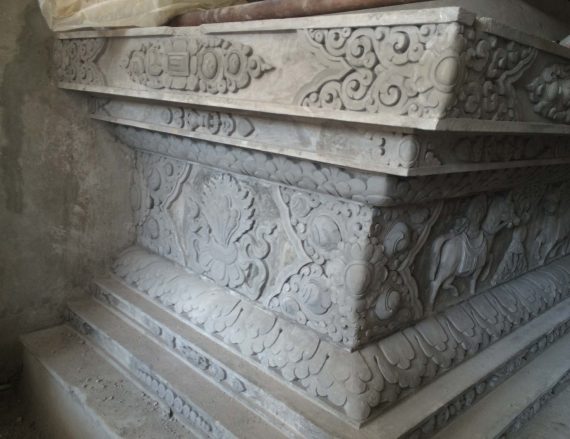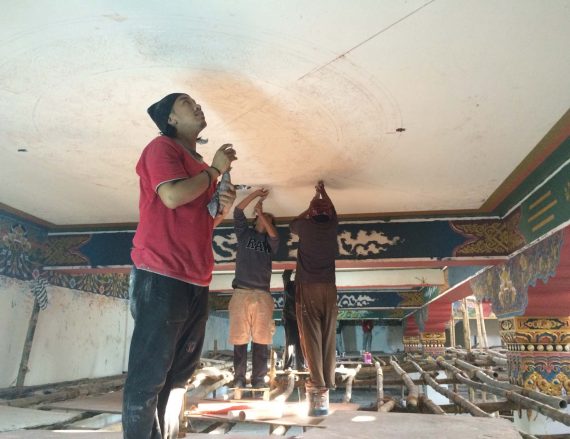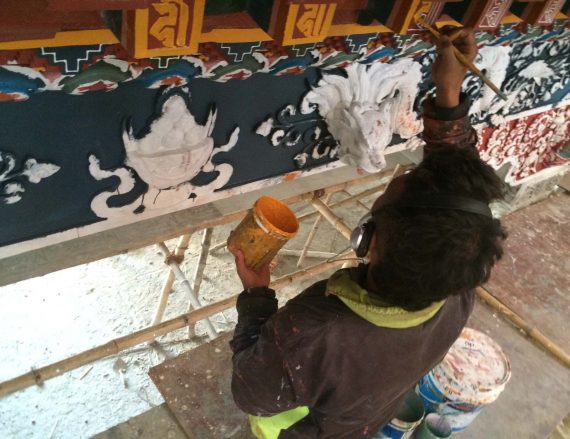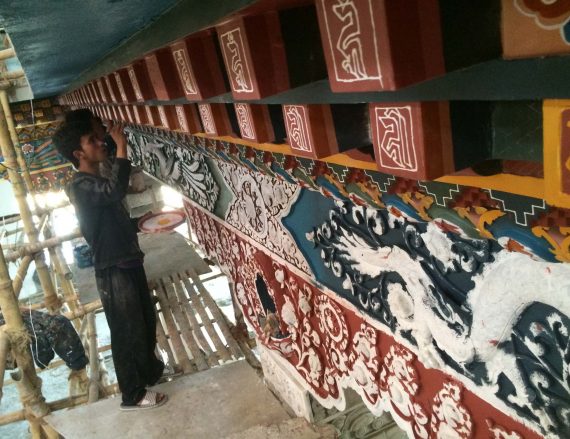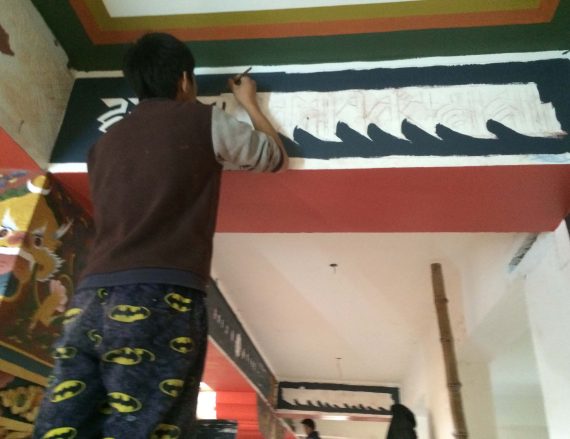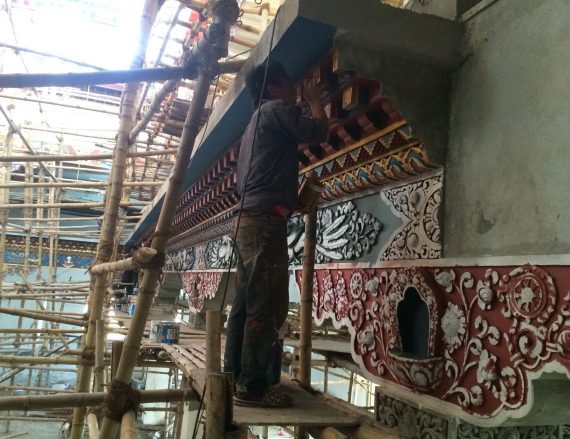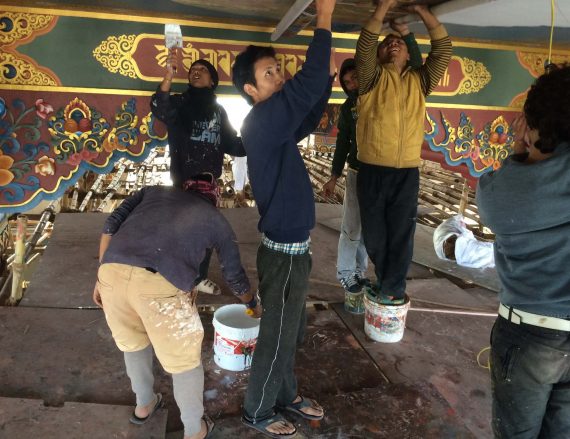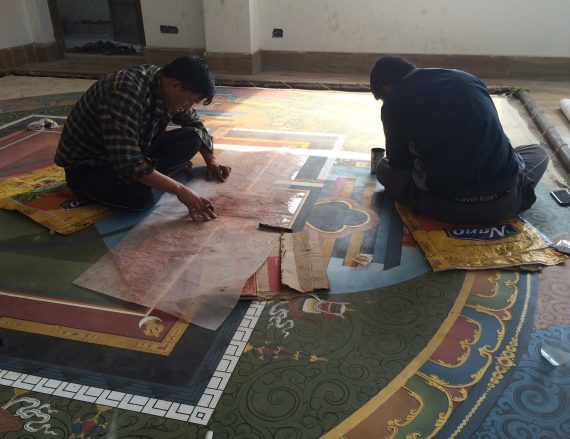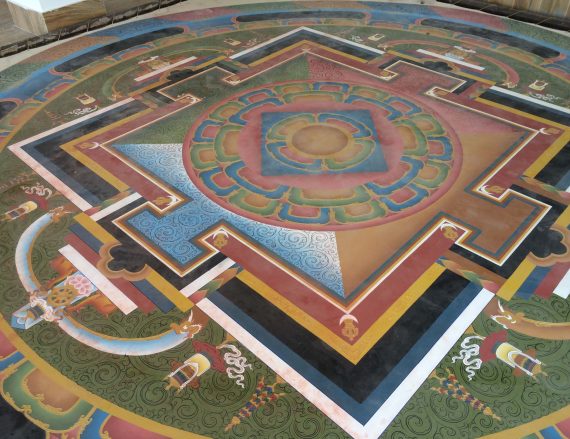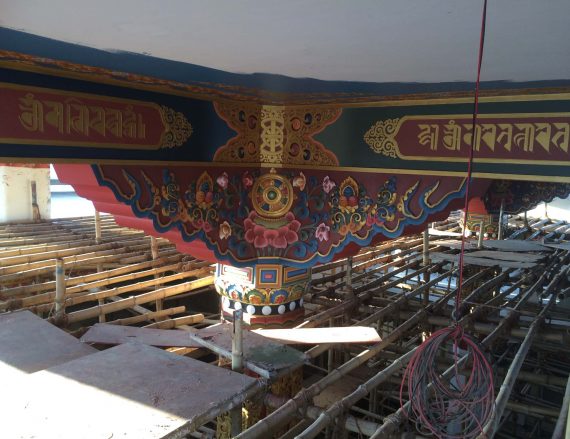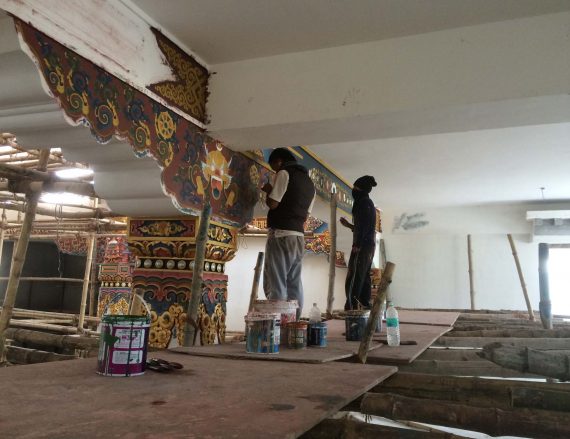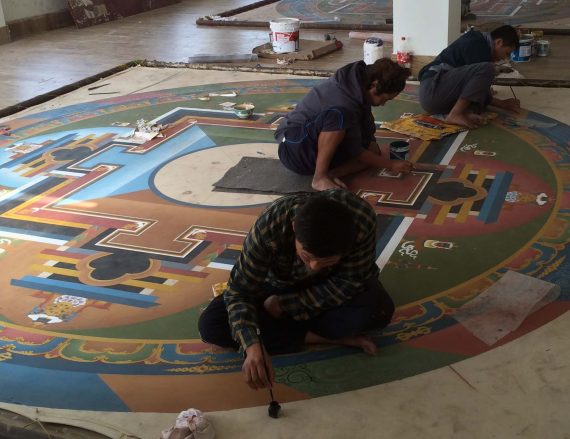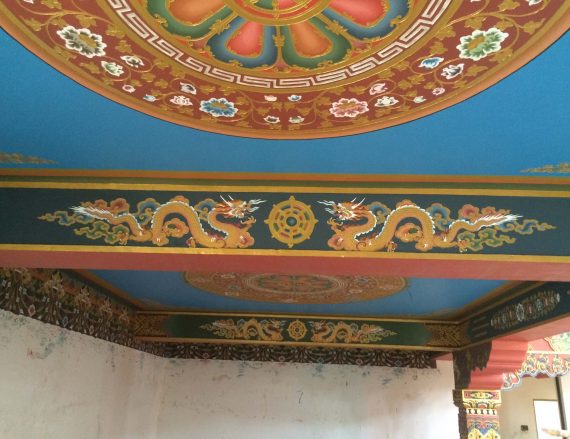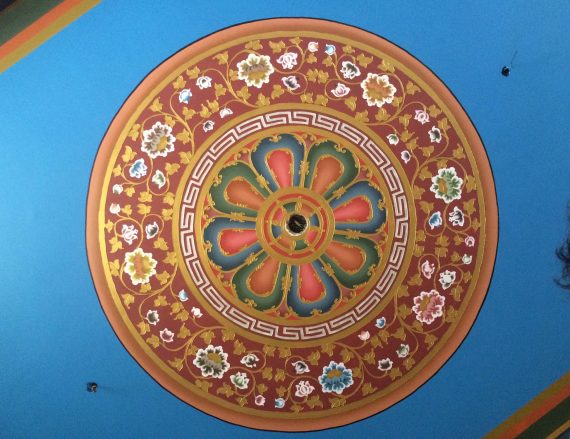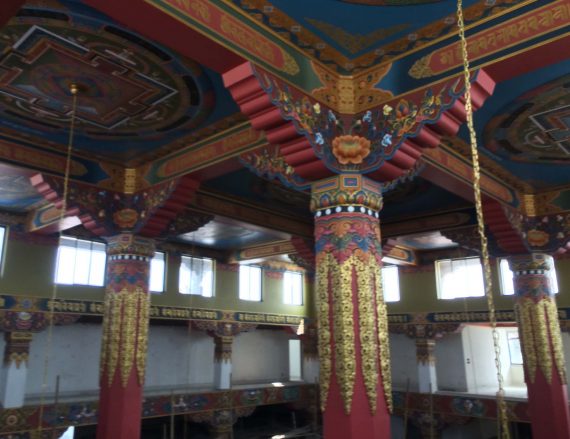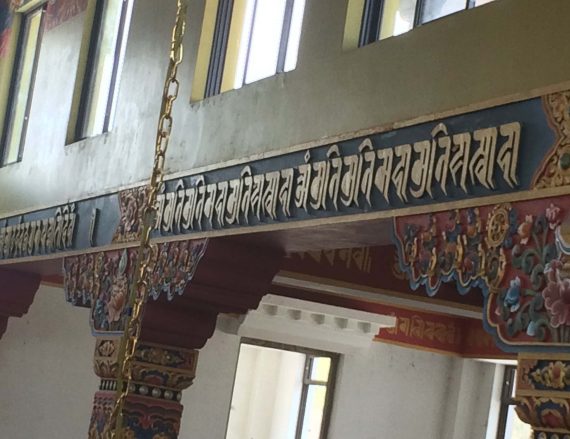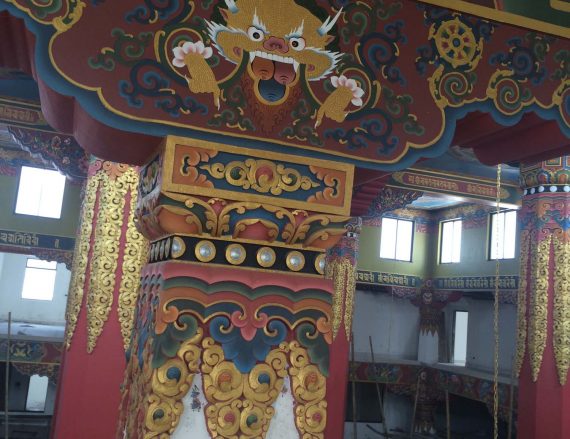Nupchen Namchak Monastery

Nupchen Namchak Monsatery is the primary monastic seat for all Ewam Namchak centers of the Early Translation School. On the twenty-eighth day of the second month in an earth rat year from the sexagenary cycle (corresponding to the year 2008), work on the monastery’s foundation began with the rituals to appropriate the site, including the burial of a treasure vase and other articles. Nowadays the entire structure and its contents are complete, constructed in the following elegant array.
Outwardly, the shape of the monastery is the complete layout of an immeasurable mansion, with four walls and four gateways with covered porches. In the corners of the courtyard are eight stupas of enlightenment. The monastery is completely surrounded by replica of a ring of fire and a palisade of vajras. On the ground floor are a dining hall and a kitchen for general sangha which are called the “Vast Peace Pavilion.” Above the ground floor rises the great temple of Orgyen Dhumatala, in the center of which is the primary support, a 38-foot statue of the master of the teachings—the Teacher, the perfect Buddha—surrounded by the seven successive generations of buddhas. To his right and left, respectively, are nine-foot-high statues of Mañjushri (the lord of sublime wisdom) and the Lord of Secrets Vajrapani (the lord of spiritual power and might). These make up the main three figures, the central one and retinue.
In alcoves to the right and left of the temple’s walls are the rooms for the preparation of tormas and for storing the garments for the ritual dances. To the right and left in the front part of the middle story of the temple are some fourteen personal chambers for lamas, named Jalandhara, Rameshara, Oddiyana, Gaudhavari, Devikota, Kamarupa, Lampaka, Trishakuney, Kosala, Himalaya, Nagara, Kulanta, Suvarnadvipa, and Sindhu. To the rear of the middle story, on the right side is the Chamber enshrining the supports for the dharma protectors named Rapjik Utsala Düdpung Zilnön Ling (“Utterly Terrifying Place of Ustala, Overwhelming the Hordes of Maras with Splendor”). On the left side is the palace of Jambhala, named Gödöd Künjung Ling (“Place of the Source of All that is Needed and Wanted”). Above these is the Nalanda Library, housing a complete collection of texts concerning all fields of knowledge. At the pinnacle on the upper floor is the temple of Amitayus, named Chimed Ngadrey Zhing-kham (“Pure Realm of the Drumbeat of Immortality”).0
Gallery on monastery construction

Statues at the shrine

Statues
At the most center of the temple rises a 38-foot statue of the master of the teachings—the Teacher, the perfect Buddha—surrounded by the seven successive generations of buddhas. To his right and left, respectively, are nine-foot-high statues of Mañjushri (the lord of sublime wisdom) and the Lord of Secrets Vajrapani (the lord of spiritual power and might). These make up the main three figures, the central one and retinue.
To the Teacher’s right is a 25-foot statue of Guru Nangsi Zilnön, the sublime teacher of the supreme secrets; to the Guru’s right and left, respectively, are 6-foot-high statues of Gyalyum Yeshe Tsogyal and Mandarava. Surrounding him are the eight manifestations of Guru Rinpoche and, above that the masters of the buddha family Samantabhadra and Samantabhadri. To the Teacher’s left is a 25-foot statue of the transcendent and accomplished conqueror Arya Tara, the foremost and venerable source for the emanations of the vast hosts of dakinis of the mother tantras. Above her is the master of her family, the dharmakaya Supreme Mother (Yumchenmo), and Tara is surrounded by the Taras who protect from the eight kinds of fear. To Tara’s right and left, respectively, are six-foot-high statues of the goddesses of power Kurukulle and the wrathful Simhamukha.
To the right and left of all of these, respectively, are a sixteen-foot-high statue of the chosen deity Vajrakumara, surrounded by the ten wrathful deities, and a sixteen-foot-high statue of sublime Hayagriva (the sovereign of supreme power), surrounded by the divine hosts of The Eight Commands on Supreme Accomplishment (Drupchen Kagyed).
To the rear of the middle story, on the right side is the Chamber enshrining the supports for the dharma protectors named Rapjik Utsala Düdpung Zilnön Ling (“Utterly Terrifying Place of Ustala, Overwhelming the Hordes of Maras with Splendor”). The main statue of this chamber is the three-foot-high statue of the chosen deity Vajrakumara.
On the left side is the palace of Jambhala, named Gödöd Künjung Ling (“Place of the Source of All that is Needed and Wanted”). The main statue of this chamber is the three-foot-high statue of Pema Gyelpo, the wealth deity aspect of Orygen.


Wall Murals

Wall Murals
In the main temple there are wall murals depicting the twelve deeds of the Teacher; the twenty-fiveintimate students of Guru Rinpoche; the twenty-five yoginis of natural freedom; Nupchen Sangye Yeshe (the sovereign among the upholders of mantra in the Land of Snows) and the lamas in the three great mainstream transmissions of The Sutra of the Unity of Enlighened Intent (Do Gongpa Düpa), The Tantra of the Magical Display (Gyutrul Drawa), and the mind teachings; the lord protectors of Rinpoche’s 1 crown chakra Khyenste Rinpoche and Tulku Orgyen Chemchok in the center of the lamas of the Nyingtik lineage; Terchen Tsasum Lingpa, Terchen Pedgyel Lingpa, and the rest of the lineage lamas of the earlier and later terma cycles; Terchen Drimed Lingpa and the rest of the successive incarnations of the Gochen Tulkus; and in addition, the thirteen deities of the Namchak cycle The Means for Accomplishing the Enlightened Mind of the Lama: The Spontaneous Fulfillment of Wishes (Tukdrup Sampa Lhündrupma) cycle with the Three Roots and dharma protectors.
On the middle story of the temple, above the head of the Teacher, are depictions of the twelve Dzogchen teachers.
To the rear of the middle story, on the right side is the Chamber enshrining the supports for the dharma protectors named Rapjik Utsala Düdpung Zilnön Ling (“Utterly Terrifying Place of Ustala, Overwhelming the Hordes of Maras with Splendor”). Within this are the murals depicting the three guardians of the Longchen Nyingtik and Namchak cycles—the mamo Ekajati, the planetary deity Rahula, and the oath-bound Damchen Dorje Lekpa—as well as the entire host of dharma protectors, principally the five classes of dharma protectors. On the left side is the palace of Jambhala, named Gödöd Künjung Ling (“Place of the Source of All that is Needed and Wanted”). Within this are the murals depicting Ratna Toetreng and Drapa Ngönshey’s terma revelation of Red Jambhala, Chögyal Dorje’s of White Jambhala, Drimed Lingpa’s of Yellow Jambhala, Vaishravana, Nagaraja the guardian of termas, and others—a treasury of wealth deities of the Three Roots, as well as supports for prosperity.
At the pinnacle on the upper floor is the temple of Amitayus, named Chimed Ngadrey Zhing-kham (“Pure Realm of the Drumbeat of Immortality”). Within this are depictions of the primary deity—the lord protector Amitayus—with the host of deities of the Namchak cycles Overwhelming the Lord of Death with Splendor (Chidak Zilnön) and Longevity Practice: The Iron Knot (Tsedrup Chakkyi Gyadüd), as well as those of The United Intent of the Three Kayas (Kusum Gongdü) and the lineage lamas and custodians who have upheld the Namchak tradition.
To summarize, aiming solely at Buddhist teachings to be restored and to flourish and endure, Tulku Sangn-ngag Rinpoche has commissioned mural paintings of those widely painted according to general history, but also of figures that have never been traditionally depicted, such as the yoginis of natural freedom. In this way Tulku Sang-ngag Rinpoche has created a new tradition, emphasizing such rare cases.

Monastery Traditional Designs


Traditional Designs
Traditional design works of the monastery consists for cement curving works, the designs are fully curved on the columns and beams of the monastery, these intricate design based on religious & traditional values of Buddhist culture took years to complete after the arduous & meticulous craftsmanship exhibited by the scores of skilled craftsmen from Bhutan and Nepal.
These design are then adorned with striking colour which brings them into life. Every designs & colours represents a meaning and has been depicted as per the ancient Buddhist architectural style.


